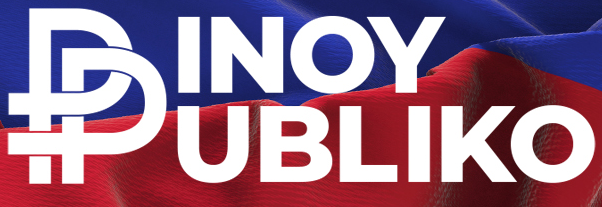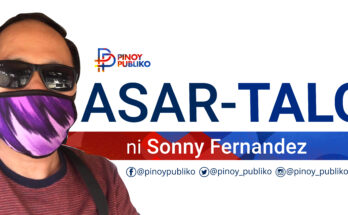WHAT is the significance of the various elements in coats of arms, seals, and emblems? Why do some government agencies in the Philippines still use the old coat of arms with the American bald eagle and the Spanish lion?
Coats of arms, seals, and emblems serve different purposes and have long been used for different functions. With their unique design, coats of arms in heraldry represent individuals, families, organizations, or territories and convey information about ancestry and accomplishments.
Seals, on the other hand, authenticate documents with engraved symbols as official signatures to ensure integrity. Emblems serve as visual representations on flags, logos, and paraphernalia to unite groups and convey meanings. These symbols are crucial for identity, recognition, and communication in historical, bureaucratic, and organizational contexts.
While there was no official or universally recognized coats of arms or seals prior to the formation of the Philippine nation and government, various symbols and flags were used during the resistance to Spanish colonial rule that powerfully expressed the Filipino people’s desire for freedom and independence.
They helped to promote unity, rally support, and symbolize the collective aspirations of the revolutionaries. Then came the Kataastaasang, Kagalanggalangang Katipunan ng mga Anak ng Bayan (KKK or simply Katipunan), which adopted and prescribed symbols representing its identity and goals. These symbols included crests, seals, and emblems important to the organization.
The following elements were commonly associated with the Katipunan: the sun, often depicted with a face, stood for the pursuit of freedom and enlightenment and symbolized the quest for independence from Spanish colonial rule; five-pointed stars, which symbolized the unity and solidarity of the Filipino people in their struggle for independence; the letter K in both the Roman and old Philippine Baybayin scripts, which stood for the organization and heritage; and the color red, which stood for courage, bravery, and sacrifice. As with a government, these symbols were used in seals, flags, and coats of arms.
When the formal government was established in 1898, the emblem used was a Katipunan-inspired equilateral triangle with a sun in the center and five-pointed stars at each angle. The sun with eyes and mouth has eight rays representing the first eight provinces that fought against Spanish colonial rule: Manila, Cavite, Bulacan, Pampanga, Nueva Ecija, Laguna, Tarlac, and Batangas. On the other hand, the three stars symbolized Luzon, Visayas, and Mindanao, the country’s major islands. This emblem was used from 1898 to 1901 by President Emilio Aguinaldo until his capture and the fall of the Philippine Republic.
During the American occupation from 1905 to 1946, the bald eagle was introduced in subsequent coats of arms, representing the dominance of the United States of America.
The old coat of arms of Manila (1596) with the golden castle representing Spain and a mythical creature with the body of a lion and the tail of a fish holding a sword with its right paw appeared in the coat of arms from 1935 to 1940 and from 1941 to 1946.
Surprisingly, the coat of arms used during the Japanese occupation (1943-1945) shows only Philippine symbols and the colors of the Philippine flag, no Japanese symbols at all.
After the Filipinos took over the government (1946 to 1998), the coat of arms included the elements of the Philippine flag, supplemented by the bald eagle of the United States of America and the Spanish lion (the arms of the Kingdom of Leon), an acknowledgment of the historical ties and influences of both the United States and Spain on the Philippines’ nation-building process, or their colonization of the country.
The seal was modified in 1998. Republic Act No. 8491, An Act Prescribing the Code of the National Flag, Anthem, Motto, Coat-of-Arms and Other Heralding Items and Devices of the Philippines, signed on February 12, 1998, states in Chapter IV entitled “The National Coat-of-Arms,” Section 41: “The National Coat-of-Arms shall have: Paleways of two (2) pieces, azure, and gules; a chief argent studded with three (3) mullets equidistant from each other; and, in point of honor, ovoid argent over all the sun rayonnant with eight minor and lesser rays. Beneath shall be the scroll with the words “REPUBLIKA NG PILIPINAS,” inscribed thereon.”
The bald eagle of the United States of America and the lion of Spain were no longer included.
Surprisingly, however, not all government uses this prescribed coat of arms. Of all the central government agencies using the coat of arms of the Republic in their seals, the Supreme Court, the Senate and the House of Representatives, the Bicameral Conference Committee of the Philippine Congress, the Commission on Appointments, and the Department of National Defense do not bear the bald eagle and the heraldic lion, which is faithful compliance with the law.
However, the Department of Foreign Affairs and the Department of Migrant Workers continue to bear the bald eagle and the heraldic lion, as with the Philippine passports issued by the Department of Foreign Affairs and banknotes issued by the Bangko Sentral ng Pilipinas, and all pins sold in the market.
The case of the National Anti-Poverty Commission (NAPC) is unique. When it began its work in 1998, its seal bore neither the bald eagle nor the lion, but sometime after 2001, the eagle and lion appeared.
It should be noted that Republic Act No. 8491 is an Act of the Philippine Congress and has the force of law in the country. Its provisions on the national flag, anthem, motto, coat of arms, and heraldic items are legally binding and provide guidelines for their proper use, display, and protection.
While the law did not require a popular vote or ratification by the people, inconsistencies in using the coat of arms, such as including certain colonial elements, must be corrected.
The National Historical Commission of the Philippines is responsible for the strict enforcement of the provisions of the law. It must therefore enact and reaffirm the law and its implementing regulations to ensure consistent compliance with the provisions of R.A. No. 8491 and provide more precise guidance on the proper use of the coat of arms.
All government agencies may likewise make the initiative of correcting their seals.





